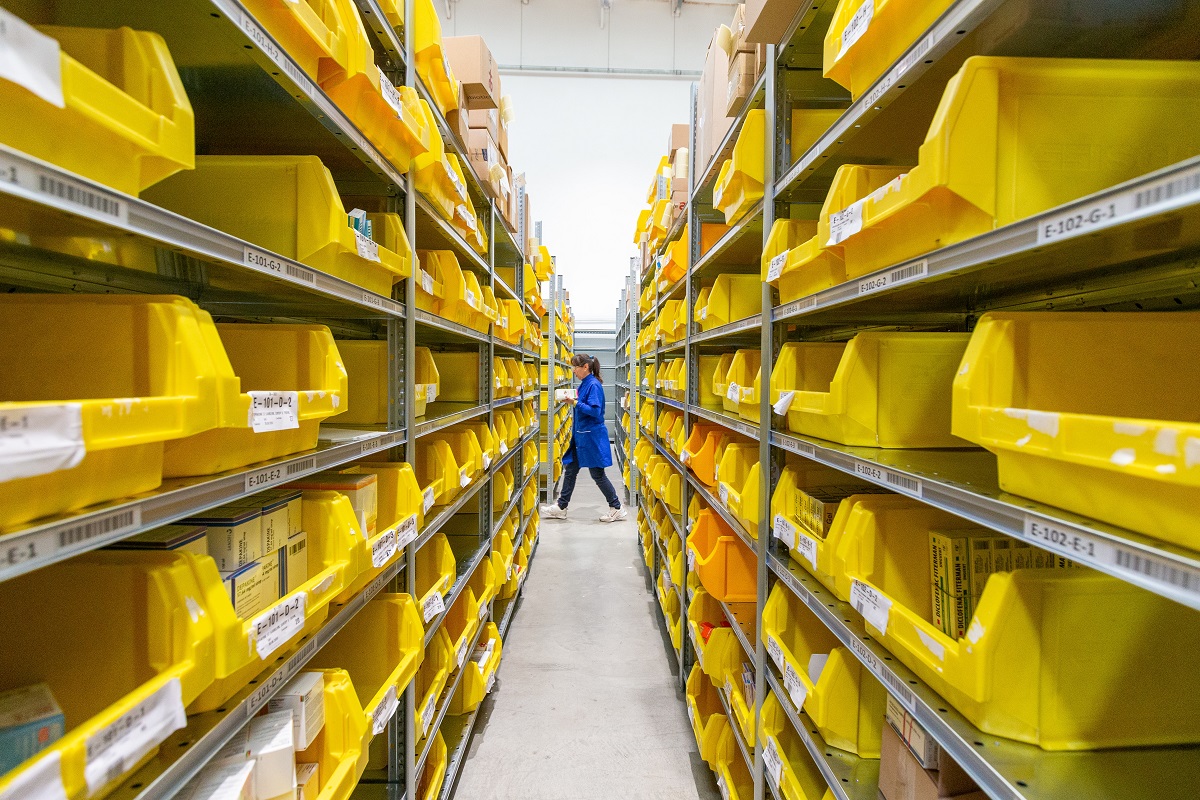Are you familiar with the Just-In-Time (JIT) inventory system? This innovative approach to managing inventory has gained widespread popularity in recent years. Hailing from Japan, JIT emerged as a critical component of Toyota’s manufacturing process in the late 20th century. The primary goal of this system is to minimize inventory while meeting customer demand, ultimately improving operational efficiency.
However, is JIT the right choice for your business? In this article, we’ll delve into the advantages and disadvantages of a JIT inventory system, helping you make an informed decision. However, before we do so, let’s touch briefly on the high points:
What Are the Pros and Cons of a JIT Inventory System?
Just-In-Time inventory offers numerous benefits, including reduced inventory carrying costs, improved cash flow, enhanced production efficiency, better supplier relationships, and greater responsiveness to market demand. However, it also comes with its share of drawbacks, such as increased reliance on suppliers, a higher risk of stockouts, greater production complexity, limited scalability, and unsuitability for certain industries or products.
What Are the Advantages of JIT Inventory?
Reduced inventory carrying costs
One of the most significant benefits of implementing a JIT inventory system is the reduction in carrying costs. Since businesses need less inventory on hand, they can save on storage expenses, as well as insurance and tax costs. This reduction in overhead expenses can lead to improved profitability.
Improved cash flow
By minimizing the amount of capital tied up in inventory, a JIT system can enhance a company’s cash flow. With increased financial flexibility, businesses can invest in growth opportunities, research and development, or other vital areas.
Enhanced production efficiency
JIT systems focus on streamlining production processes, which reduces waste and obsolescence. By producing goods only when required, companies can ensure their inventory remains fresh and relevant, ultimately leading to better utilization of resources.
Better supplier relationships
Implementing a JIT system often requires closer communication and coordination with suppliers. As a result, businesses can foster stronger relationships with their suppliers, who are then more likely to provide higher-quality products and services.
Greater responsiveness to market demand
A well-functioning JIT system enables businesses to react more quickly to changes in customer preferences. This improved responsiveness allows companies to manage their inventory more effectively, satisfying customers while minimizing the risk of overstocking or understocking.
How Does JIT Improve Competitive Advantage?
A Just-In-Time inventory system can bolster a company’s competitive advantage in several ways. By doing so, JIT helps businesses stand out among their competitors. Let’s explore these aspects in more detail.
- First and foremost, JIT enhances operational efficiency. By producing goods only when needed and keeping inventory levels low, companies can avoid tying up capital in excess inventory. This financial flexibility allows them to invest in other areas, such as research and development, marketing, or technology, which can lead to increased competitiveness.
- Additionally, JIT systems emphasize streamlining production processes to reduce waste, which contributes to cost savings. Lower production costs can translate into more competitive pricing for customers, positioning the company as a more attractive option in the market.
- Another way JIT improves competitive advantage is by fostering stronger relationships with suppliers. When companies work closely with suppliers to maintain a smooth flow of materials, they can benefit from better quality inputs and more reliable delivery. This cooperation often results in higher quality products, which in turn can elevate a company’s reputation and market standing.
- Moreover, a well-implemented JIT system allows businesses to respond more quickly to changes in customer preferences and market trends. This agility helps companies stay ahead of their competitors by adapting their product offerings to meet evolving demands, ensuring they remain relevant in the marketplace.
- Lastly, the improved cash flow resulting from a JIT inventory system can provide companies with the resources to seize growth opportunities or weather economic downturns more effectively. This resilience and ability to capitalize on market opportunities can contribute to a stronger competitive position.
What Are the Disadvantages of a JIT Inventory System?
A Just-In-Time production strategy, although offering numerous advantages, can present certain challenges for businesses. So, what are the main problems with a JIT production strategy?
Increased reliance on suppliers
While strong supplier relationships are a benefit of JIT, this also means businesses become more reliant on their suppliers. This increased dependence can leave companies vulnerable to supply chain disruptions, such as transportation delays or supplier bankruptcy. For companies employing JIT, any delays or issues can directly impact production schedules.
Higher risk of stockouts
By maintaining low inventory levels, businesses using a JIT system run the risk of stockouts due to natural disasters or transportation disruptions that can halt the flow of raw materials. This can lead to production delays and potential stockouts. Ultimately, this leads to missed sales opportunities and can damage customer satisfaction and brand reputation.
Greater production complexity
The system requires highly skilled employees who can adapt to fluctuating production requirements. Additionally, it places greater demands on management to coordinate and maintain a seamless flow of inventory and production processes. This can be challenging for businesses with limited resources or those that lack an experienced workforce.
Limited scalability
Scalability can also pose a challenge for businesses utilizing a JIT production strategy. Expanding production to accommodate growth or diversifying the product range may become more complicated under JIT. Maintaining low inventory levels and responding to market demands quickly requires a high level of flexibility and adaptability.
Unsuitable for certain industries or products
A JIT production strategy may not be suitable for all industries or product types. Companies operating in sectors with highly seasonal demand or producing a wide range of low-volume products might face difficulties implementing JIT effectively. In such cases, the risks and complexities introduced by a JIT approach may outweigh the potential benefits.
Key Factors to Consider When Implementing a Just-In-Time Inventory System
Before adopting a Just-In-Time inventory system, consider the following factors:
- Company size and industry: JIT may be more suitable for certain industries and company sizes.
- Supply chain stability and reliability: A stable and reliable supply chain is crucial for the successful implementation of a JIT system.
- Production capabilities and flexibility: Your company’s ability to adapt production processes and respond to changing demand is vital.
- Market demand patterns: Understanding your customer’s demand patterns can help determine if JIT is the right choice.
In Closing
As you consider whether a JIT inventory system is the right choice for your business, weigh the pros and cons carefully. Reflect on your company’s specific needs, industry, supply chain stability, production capabilities, and market demand patterns. Ultimately, the most effective inventory management approach will depend on your unique circumstances and goals.
In the end, adopting a JIT inventory system can be a game-changer for some businesses, leading to significant improvements in efficiency and profitability. However, it is vital to thoroughly evaluate its potential impact on your operations and make an informed decision that aligns with your company’s long-term objectives.


